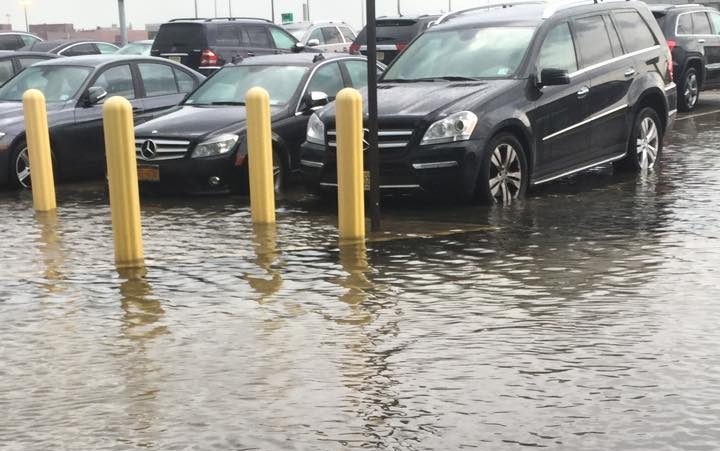Friday in New York City saw widespread frustration among residents dealing with flooded basements and property damage, as the storm drains struggled to cope with the heavy rainfall earlier in the day.
The flooding was severe, with reports of water levels rising so high that a restaurant owner mentioned she would have had to swim through the street to reach her front door. Surveillance cameras captured the rising waters, and by the time the flood receded, her outdoor dining area had been washed away. This story was just one example of the challenges faced by many New Yorkers.
The impact of the storm was felt citywide, affecting commuters, motorists on the FDR, and subway riders, all of whom experienced significant disruptions. Most subway lines were affected, and the Metro-North service was fully suspended for hours, causing considerable inconvenience for those trying to get to and from work.
Janno Lieber, MTA Chairman and CEO, noted that despite the disruptions, the majority of the city’s buses were operational and reaching their destinations, with only a few instances of buses being stranded.
The advice for New Yorkers to stay home was given, but even staying at home did not guarantee safety for many residents in basement apartments in Brooklyn. Sewer systems became overwhelmed, leading to sewage backing up into people’s homes, causing damage to property and sanitation concerns.
Residents described the destruction of laptops, mattresses, and furniture due to the flooding. Some even faced the unusual situation of water coming back into their basements through the main sewer line, gushing out like a geyser.
Kelly Hayes, the owner of Gowanus Garden Restaurant, explained that her restaurant’s basement was filled with sewage in the morning, and the outdoor dining structure was destroyed by floodwaters that reached over three feet in height. She anticipated significant cleanup costs, including the removal of debris.
Hayes expressed frustration at the timing of emergency alerts, noting that by the time she received any alerts from the city, it was already too late to take preventive measures.
Brooklyn Borough President Antonio Reynoso and Public Advocate Jumaane Williams criticized Mayor Eric Adams for what they perceived as a lack of urgency in responding to the storm. They called for better communication and preparation, suggesting that early morning press conferences could have helped update residents on the situation.
Mayor Adams defended his administration’s response, stating that notifications were sent out on Thursday afternoon and that information about the approaching storm was widely broadcast. Despite these measures, the unexpected intensity of the storm and its effects on the city clearly posed significant challenges for both residents and authorities.







